What's New
Displaying results 1891 - 1900 of 4914

Resource | Publications,
The generic tools and recommendations for HIV patient monitoring in the WHO Consolidated guidelines on person-centred HIV patient monitoring and case surveillance should be adopted and customized to fit the specific setting of each country and programme; most importantly, to provide essential, quality patient care.
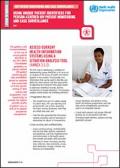
Resource | Publications,
The guidance and recommendations on the use of unique patient identifiers in the 2017 WHO Consolidated guidelines on person-centred HIV patient monitoring and case surveillance should be adopted and customized to fit the specific setting of each country and programme; most importantly, to provide the highest possible quality of patient care, as well as to support programme management.
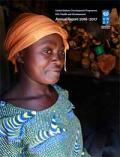
Resource | Publications,
Planetary health, including human health, is core to sustainable development. SDG 3 and other health-related targets seek to ensure health and well-being for all, at all ages, including in humanitarian and fragile contexts. Virtually all development challenges of the 21st century have the potential to profoundly affect health—including climate change, fragility and conflict within and between countries, economic and social disparities within countries, urbanization and the growing “youth bulge.” Progress on many SDGs will only be possible by ensuring that policy and programming responses include efforts to address health.
In 2016, UNDP released a corporate strategy, titled “The HIV, Health and Development Strategy 2016–2021: Connecting the Dots,” which is fully aligned with the 2030 Agenda and contributes to UNDP’s vision of eradicating poverty and reducing inequalities and exclusion.

Resource | Publications,
The 2016-2017 Annual Report on UNDP’s partnership with the Global Fund --- and its health implementation programmes funded by other sources --- highlights the achievements and partnerships in responding to HIV, TB, malaria, and health more broadly. UNDP supports countries to implement large-scale health programmes—including reaching some of the most hard-to-reach populations and strengthening institutions to deliver essential services in challenging and high-risk country contexts. The partnership with the Global Fund has helped save 2.5 million lives and the health implementation work has grown to US$520 million in expenditure per year (2016) including all sources of funds, making a powerful contribution to Agenda 2030 and the commitment to ‘leave no one behind’.
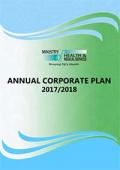
Resource | Publications,
The objectives outlined in this Annual Corpoarte Plan are primarily designed to improve the health and welfare of the Fijian families. The Ministry is committed to responding to all health needs of the population based on evidence of health trends which has been instrumental in identifying the key priority outcomes. There is a greater emphasis on health reforms and strengthening of the overall health systems and programs to create robust and modernized health services that meets the needs of ordinary Fijians regardless of factors like age, gender and ethnicity. This ACP also aligns to the principles of Fiji’s Constitution that empowers the Fijians to access the basic services like health and education in a timely and efficient manner.
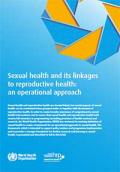
Resource | Publications,
Sexual health and reproductive health are closely linked, but crucial aspects of sexual health can be overlooked when grouped under or together with the domain of reproductive health. In order to create broader awareness of comprehensive sexual health interventions and to ensure that sexual health and reproductive health both receive full attention in programming (including provision of health services) and research, the World Health Organization (WHO) has reviewed its working definition of sexual health to create a framework for an operational approach to sexual health. The framework, which is intended to support policy-makers and programme implementers and to provide a stronger foundation for further research and learning in sexual health, is presented and described in full in this brief.
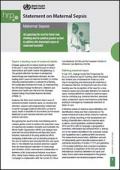
Resource | Publications,
In April 2016, WHO convened an expert consultation to discuss, develop and propose a new global definition for maternal sepsis. A multidisciplinary international panel of 48 experts was surveyed through an online and in-person consultation in March–April 2016 for their opinion on the new definition of sepsis proposed for the adult population and the importance of different criteria for identification of maternal sepsis. The new maternal sepsis definition reads as follows: maternal sepsis is a life-threatening condition defined as organ dysfunction resulting from infection during pregnancy, childbirth, post-abortion, or postpartum period.
The operationalization of the new maternal sepsis definition guides providers to focus on actionable elements such as the administration of antibiotics and fluids, and support of vital organ functions.
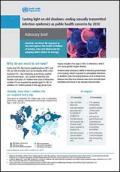
Resource | Publications,
Why do we need to act now? Some viral STIs, like human papillomavirus (HPV) and HIV, are still incurable and can be deadly, while some bacterial STIs – like chlamydia, gonorrhoea, syphilis and trichomoniasis – are curable if detected and treated. Each year, 357 million new cases of these four curable STIs are acquired by people aged 15–49. In addition, 417 million people in this age group have herpes simplex virus type 2 (HSV-2) infections, which can cause genital herpes disease. Antimicrobial resistance (AMR) to Neisseria gonorrhoeae is increasing, which may lead to untreatable infections. In addition, new menacing diseases such as Ebola virus disease and Zika virus disease have more recently been identified and found to be sexually transmissible.
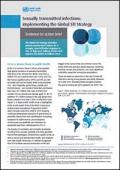
Resource | Publications,
In the 21st century, there is still an unacceptably high global incidence of sexually transmitted infections (STIs). Around the world, more than a million STIs are acquired every day. Some viral STIs, like human papillomavirus (HPV) and HIV, are still incurable and can be deadly, while some bacterial STIs – like chlamydia, gonorrhoea, syphilis and trichomoniasis – are curable if detected and treated.
The Global STI Strategy describes priority actions that countries can take as part of a stronger and more effective response to STIs, to help save millions of lives and improve the health of millions more. The range of actions includes strengthening data monitoring, STI prevention, early diagnosis, and patient and partner management, as well as initiating approaches to reach the most vulnerable populations.
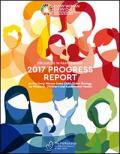
Resource | Publications,
Every Woman Every Child Global Strategy for Women’s, Children’s, and Adolescents’ Health is increasingly uniting stakeholders across sectors for collective advocacy and action. It has created a surge of support to ensure women, children and adolescents are at the heart of the SDGs. One year on, this inaugural Global Strategy progress report serves as a critical tool for alignment, advocacy and accountability.
This report showcases how multisectoral and multistakeholder partnerships are working across the life-course to ensure equitable access to quality and affordable care. Around the world, and across sectors, we are coming together to deliver together on a shared vision for, and of, women, children and adolescents as critical agents of change.





